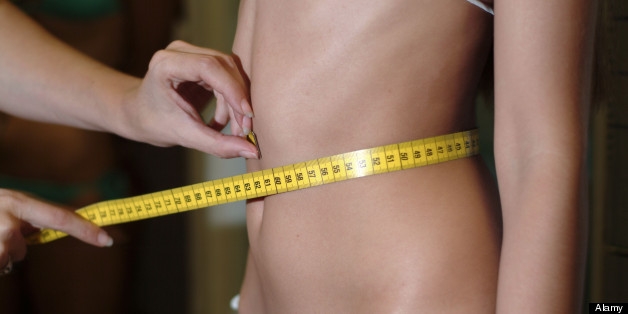Health Initiatives on the Rise in the Fashion Industry

Amidst a business of extremes, the modeling industry has yet to get it right. Public conversation on models' weights has shifted from a fashion debate into a political hot topic. Each decade brings with it new body images and ideals dating from the 1920’s flapper, to the current phenomenon of "big booty" curves. With such a range of healthy body types in the world, why is it that fashion insists that people pick from two extremes, either "plus size" or heroin chic?
The twenty first century has brought with it a fitness obsessed society centered on eating clean and getting fit. Many consumers cannot identify with either the stick thin, or the overly curvy standards that campaigns promote; plus size models average an American size of 18, while "normal" models float around a size 0. The struggle to formulate a healthy body image continues and leaves consumers feeling like they must choose between the lesser of two evils. Yet, many in the industry fail to recognize that when conflicts like this arise in our society, the majority of people will be satisfied when both extremes come to a compromise — when fashion runways and advertising campaigns begin to reflect the real woman. Though some people are naturally built that way, most believe that neither a size 00, nor a size 18 promotes ideals for living healthy. If the debate surrounding weight pertains to well being of the models, then strict guidelines to promote realistic images should be enacted. To push for a wholesome and active modeling industry would greatly benefit the ways in which consumers view themselves.
As obesity rises around the world, people are often ignorant the health complications of rapid and substantial weight gain. In a world where, per the World Health Organization, obesity kills more people per year than being underweight does, pushing brands to endorse "plus size" models can be a slippery slope. Laws have in recent years begun to emerge in France, Spain, Italy, and Israel to help protect models from being underweight. BMI minimums act as safe guards for models against the agencies' and casting director’s unhealthy standards. As the industry becomes more concerned for their models, the future looks hopeful. Many companies like Michael Kors and Victoria Beckham have spoken out against ultra-thin models. Beckham spoke to the Guardian in 2010," Models are thin. But I do take my position seriously and I wouldn't want to use very skinny girls."
Fashion designers Victoria Beckham (left) and Diane von Furstenberg (right). Image Credit: Shutterstock.
At a Council of Fashion Designers of America meeting, CFDA President Diane von Furstenberg spoke about creating health initiatives. Furstenberg said, “Working in partnership with the fashion industry, medical experts, nutritionists, and fitness trainers, the CFDA formed a committee to propose a series of positive steps designed to promote wellness and a healthier working environment.” As Furstenberg makes a strong effort to create healthy images for women, other publications like British Vogue have attested that they will not work with underweight models.
The fashion business is slowly evolving to protect its muses. With the take over of the new generation we are setting the precedents and standards for the future of the industry. Without restrictions and harsh rules put into place, brands and agencies will continue to abuse their power and harm young models. If the industry cares more about the health and well being of the people that work in it, they will convey a healthy body image and lifestyle to society.








